Busin glide helps protect donor tissue during DSAEK
The Busin glide prepares tissue for insertion and also protects endothelial cells during pull-through techniques.
As Descemet’s stripping automated endothelial keratoplasty takes the spotlight away from penetrating keratoplasty for treating diseases such as Fuchs’ and pseudophakic bullous keratopathy, it becomes more thoroughly refined as surgeons scrutinize the minutiae of their techniques for possible improvement.
 Oren Fass |
One area of recent discussion is the damage that donor tissue may suffer as it is folded to fit through small incisions. Studies have pointed at histological and specular microscopic data that support the idea that some element of endothelial cellular destruction occurs as the tissue is folded and pressed through the wound, leading to newer, less compressive forceps or more protective techniques. Recent research has revealed that regardless of the method of tissue placement — forceps or glide — larger wounds lead to less compression of the delicate donor tissue and have less endothelial cell damage.
The Busin glide may offer tissue protection when used not just as a preparatory device to hold the tissue outside the wound in a ready position, but by actually inserting it into the wound so that the tissue is not compressed as it passes into the eye.
The Busin glide itself is designed to fit into a 3.2-mm corneal wound (my personal wound size is closer to 4 mm). The dimensions of the Busin glide opening using calipers measurement are approximately 3.2 mm × 2 mm — indicating, via the formula for the area of an ellipse (W × L) × 0.8, an opening that delimits an area of 5.12 mm².
Assuming then, a DSAEK lenticule of 9 mm diameter and 150 µm thickness, even as its widest portion passes through the Busin glide, it only occupies an area of 1.35 mm². These calculations indicate that donor tissue has more than three times the room necessary before compression becomes an issue. Additionally, using these figures to calculate the circumference of an ellipse, an internal circumference of 8.38 mm is predicted within the Busin glide, indicating that the typical 8.5 mm diameter DSAEK lenticule likely only undergoes minimal touch on its outermost dimensions as it passes through the glide into the eye.
A recent study lends some credence to this hypothesis, as it found that Busin glide-assisted insertion led to less endothelial cell death. Of note, the photographs in that article show a technique in which the Busin glide is partially inserted into the wound, functioning more like an injector, and perhaps adding the extra protection against wound compression.
There are many techniques that may be of use to surgeons who wish to utilize the Busin glide to help protect the endothelial cells on the donor lenticule. The following techniques allowed us the least touch or manipulation of the lenticule in the insertion process.
Busin glide-enabled suture drag technique No. 1 (pictured)
After careful scoring and stripping of Descemet’s membrane, the main wound is widened to approximately 4 mm, and a 10-0 nylon suture is preplaced at the wound and then slid away from the wound opening. Careful irrigation and aspiration of viscoelastic is performed. An anterior chamber maintainer is inserted into a paracentesis 1 to 2 clock hours from the main wound.
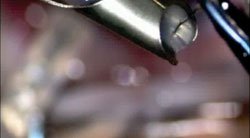 Figure 1. CIF-4 needle is passed into DSAEK graft. |
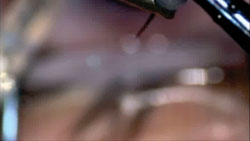 Figure 2. Back pressure is used to minimize movement of graft. Images: Fass O |
 Figure 3. As the needle completes its transition, back pressure keeps the graft from following the needle’s course. |
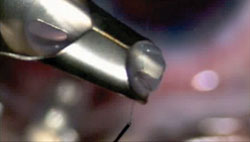 Figure 4. The suture advances through the graft. |
 Figure 5. 25-gauge and CIF-4 needle enter in main wound. |
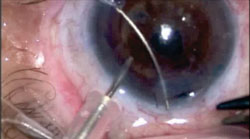 Figure 6. The CIF-4 and 25-gauge needles are joined. |
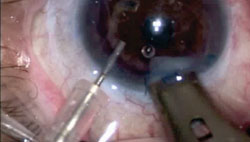 Figure 7. Traction on suture facilitates entry of graft. |
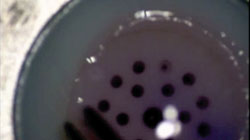 Figure 8. The needle is placed into peripheral suction hole. |
 Figure 9. The graft is lifted from stromal side to complete needle pass. |
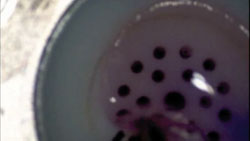 Figure 10. Graft is nudged aside to retrieve needle. |
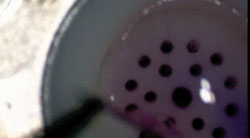 Figure 11. Needle is removed and suture pulled through. |
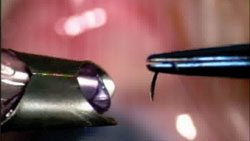 Figure 12. 10-0 nylon passes through the graft. |
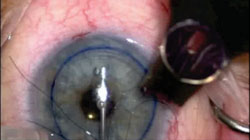 Figure 13. The 10-0 nylon suture is introduced into the anterior chamber by a Kuglen hook. |
 Figure 14. The suture is retrieved from a paracentesis with a 20-gauge Moria grasper. |
 Figure 15. The graft unfolds spontaneously in the anterior chamber. |
 Figure 16. 20-gauge forceps, lenticule and Busin glide move simultaneously into wound. |
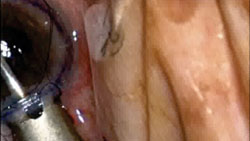 Figure 17. Tension on the graft keeps it from moving backward in the Busin glide. |
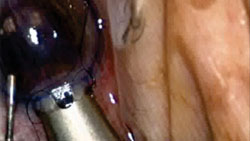 Figure 18. Graft entry into anterior chamber is facilitated by anterior chamber maintainer. |
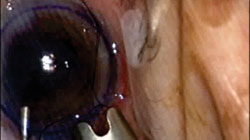 Figure 19. Air bubble will unfold partially folded graft. |
The precut corneal graft tissue, which has been punched on a Barron disposable trephine block to a diameter of 8 mm to 9 mm, is placed on the surgical field. Moria 20-gauge DSAEK lenticule forceps are used to grasp the DSAEK donor tissue at its periphery and separate it from the precut anterior lamellae, while sliding it onto the Busin glide. The same forceps are then used to reach through the Busin glide and move the lenticule into position at the peripheral opening of the Busin glide.
Once the tissue is in this position, apt use can be made of a small inward groove on the distal lip of the Busin glide, which provides enough room for passage of a suture. A 10-0 Prolene double-armed CIF-4 needle is passed through the peripheral edge of the DSAEK lenticule. Care is taken at this point to add some lateral pressure toward the metallic notch on the Busin glide, so that the tissue does not attempt to move forward or downward with the needle as it transitions through the tissue.
Once the CIF needle has been passed, the suture is pulled through the tissue approximately halfway. A surgical assistant then holds the Busin glide close to the eye, so that there is no tension on the suture. A 25-gauge needle is then inserted at a paracentesis site located 180° from the main incision. A preplaced anterior chamber maintainer at a paracentesis site adjacent to the main wound is operated via foot pedal to maintain a full anterior chamber.
One CIF-4 needle at a time is then passed through the main wound, docked in the opening of the 25-gauge needle, and then the joined CIF-4 and 25-gauge needle pair are withdrawn from the eye. This step is repeated for the second CIF-4 needle. Suture slack is then gently pulled through the eye with tying forceps, and the Busin glide is flipped over so that the stromal side of the lenticule is facing anteriorly and inserted into the wound.
If there is not appropriate tension on the Prolene traction suture, the graft may slip back in the glide as the anterior chamber is entered, thus a careful two-handed technique — one keeping tension on the suture, the other inserting the glide — is necessary. Gentle traction on the 10-0 Prolene will ease the graft into a full anterior chamber. Minimal irrigation from the anterior chamber maintainer may be continued as the graft enters the anterior chamber.
The graft will typically not need to be unfolded by any manual means as it enters the anterior chamber because of its orientation while in the Busin glide. Once the graft is in the anterior chamber, the Busin glide is removed, and preplaced 10-0 nylon sutures are used to close the corneal wound. The 10-0 Prolene suture is then cut and gently pulled out of the lenticule from the distal paracentesis site. The anterior chamber maintainer is removed, and an air bubble is placed under the graft to conclude the surgery.
Busin glide-enabled suture drag technique No. 2
Surgeons who have the Moria trephine block can use the suction holes. The holes are large enough to accept either a CIF-4 or a bent STC-6 needle.
Suction may be placed on the donor lenticule during this procedure for an accurate suture placement during which the graft will not move (as opposed to the first method). Both the first and second method share the advantage of allowing the surgeon to pass a suture without grasping and manipulating the tissue with forceps to steady it for the needle pass.
As the hub of the needle reaches the tissue, a second instrument, such as a Sinskey hook, may be used to lift the periphery of the graft from the stromal side so that the needle passes through the tissue in its entirety. The graft is nudged aside 1 mm to 2 mm by gentle pressure with a blunt instrument on the stromal edge to allow the needle to be withdrawn. The needles are then fed down the nozzle of the Busin glide, and the graft is slid into place on the glide via traction or forceps. Delivery into the eye is identical to method No. 1. This method is time-consuming but allows controlled needle placement.
Busin glide-enabled suture drag technique No. 3
The third technique uses the notch at the end of the Busin glide for the placement of a 10-0 nylon suture. The suture is passed through the donor lenticule in a similar manner to the first technique, careful to avoid movement of the graft by passing the suture with back pressure against the notch. Once the suture is passed, it can be cut from the nylon, and the nylon itself passed through the anterior chamber with a Kuglen hook while the anterior chamber is kept inflated with an anterior chamber maintainer in a separate paracentesis.
The nylon suture is then retrieved from the anterior chamber from a paracentesis site 180° opposite the main wound using either a Kuglen hook or, in this case, a Moria 20-gauge grasper. Once both ends are passed across the anterior chamber, the graft can be pulled through with gentle tension on the suture. An anterior chamber maintainer keeps the chamber formed, and the trifold configuration the lenticule assumes within the Busin glide typically unfolds on its own when it enters this formed anterior chamber. This is helpful in avoiding any further intraocular maneuvers to unfold the graft.
Busin glide-enabled forceps drag technique No. 4
The last technique is perhaps the least time-consuming technique and does not involve the use of a suture at all. The graft is positioned on the Busin glide as in the other methods and held close to the main wound. From a paracentesis 180° opposite the main wound, Moria grasping forceps are passed while keeping the chamber inflated with an anterior chamber maintainer. The grasping tips of the forceps exit the main wound and grasp the edge of the DSAEK tissue, after which the forceps and the Busin glide are moved together into the wound so that the glide can protect against compression, and the tissue is drawn into the anterior chamber with the forceps. In this case, the graft enters two-thirds unfolded; however, because it is in the trifold configuration and because it has entered a full anterior chamber, it does not require anything more than placement of an air bubble under it.
Although all of these techniques require more time than folding the graft with forceps generally requires, surgeons are now aware that the graft requires either a large wound to avoid compression or some form of protection as it passes through the wound in order for it to maintain a healthier cell count and provide stable vision for the longest possible time. Endothelial cell counts are being gathered on these cases, and this data will be essential to adding support to the idea of “intra-wound” graft protection.
References:
- Bradley JC, McCartney DL. Descemet’s stripping automated endothelial keratoplasty in intraoperative floppy-iris syndrome: Suture-drag technique. J Cataract Refract Surg. 2007;33(7):1149-1150.
- Ide T, Yoo SH, Goldman JM, Perez V, O’Brien TP. Descemet-stripping automated endothelial keratoplasty: Effect of inserting forceps on DSAEK donor tissue viability by using an in vitro delivery model and vital dye assay. Cornea. 2007;26(9):1079-1081.
- Kobayashi A, Yokogawa H, Sugiyama K. Descemet stripping with automated endothelial keratoplasty for bullous keratopathies secondary to argon laser iridotomy-preliminary results and usefulness of double-glide donor insertion technique. Cornea. 2008;27 Suppl 1:S62-S69.
- Mehta JS, Por YM, Beuerman RW, Tan DT. Glide insertion technique for donor cornea lenticule during Descemet’s stripping automated endothelial keratoplasty. J Cataract Refract Surg. 2007;33(11):1846-1850.
- Price FW Jr, Price MO. Descemet’s stripping with endothelial keratoplasty in 50 eyes; a refractive neutral corneal transplant. J Refract Surg. 2005;21(4):339-345.
- Sarnicola V, Toro P. Descemet-stripping automated endothelial keratoplasty by using suture for donor insertion. Cornea. 2008;27(7):825-829.
- Terry MA, Saad HA, Shamie N, et al. Endothelial keratoplasty: The influence of insertion techniques and incision size on donor endothelial survival. Cornea. 2009;28(1):24-31.
- Oren Fass, MD, can be reached at Vision Quest Eye Care and Surgery Center, 5421 La Sierra Drive, Dallas, TX 75231; e-mail: orenfass@hotmail.com. Dr. Fass has no financial or proprietary interest in any product, material or method contained in the article.

